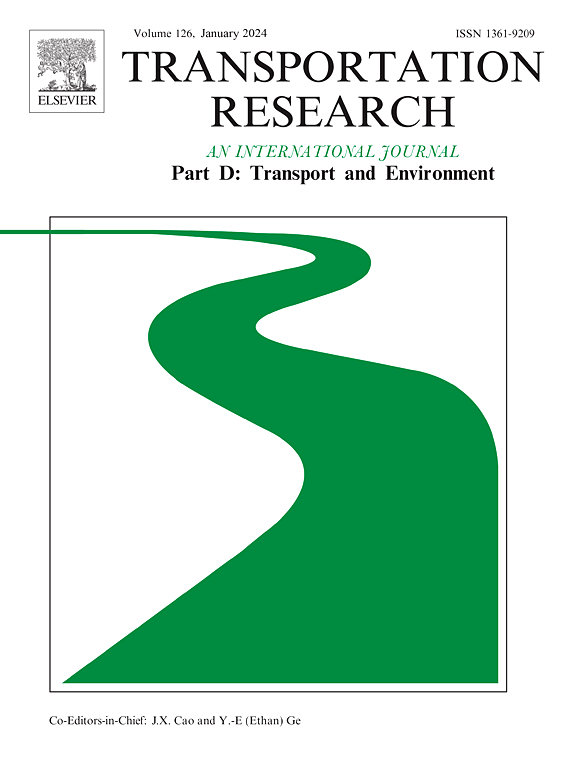区域路面基础设施网络对未来热应力的临界脆弱性评价
IF 7.3
1区 工程技术
Q1 ENVIRONMENTAL STUDIES
Transportation Research Part D-transport and Environment
Pub Date : 2025-05-29
DOI:10.1016/j.trd.2025.104828
引用次数: 0
摘要
气候变化影响着全球变暖的基础设施系统。本文提出了京津冀地区路面网络对未来热应力的临界脆弱性评价方法。利用CMIP6气候模式,在SSP2-4.5和SSP5-8.5两种情景下对高速公路网络(包括高速公路和主干路)进行了分析。研究结果表明,21世纪,特别是本世纪中叶以后,高铁的热暴露增加了其车辙脆弱性。我们观察到路面暴露于累积热强度与路面车辙之间的正相关关系,这与未来路面生命周期和SSP排放情景无关。在相同的热暴露条件下,高速公路车辙性能优于主干车辙。最后,建立了基于高铁运行效率的临界-脆弱性矩阵。研究结果说明了气候变暖条件下高铁路面系统的维护优先性,特别是对于资源较少的地方市政当局。本文章由计算机程序翻译,如有差异,请以英文原文为准。
Criticality-vulnerability assessment of regional pavement infrastructure network to future heat stress
The climate change affects the infrastructure system in a warming world. This paper presents a criticality-vulnerability assessment of the pavement network in Beijing-Tianjin-Hebei (BTH) region to future heat stress. The high-speed road (HSR) networks, including the motorway and trunk roads, are analyzed for this purpose with the CMIP6 climate model under SSP2-4.5 and SSP5-8.5 scenarios. Here we demonstrate that the growing heat exposure of HSR increases its rutting vulnerability in 21st century, especially after mid-century. We observe a positive relationship between the pavement exposure to cumulative heat intensity and the pavement rutting, which is independent of future pavement life-cycle and SSP emission scenario. The motorway shows better rutting resistance than the trunk under the same heat exposure. Finally, a criticality-vulnerability matrix is established based on HSR travel efficiency. Our results illustrate the maintenance priority of HSR pavement system under warming climate especially for the local municipalities that have fewer resources.
求助全文
通过发布文献求助,成功后即可免费获取论文全文。
去求助
来源期刊
CiteScore
14.40
自引率
9.20%
发文量
314
审稿时长
39 days
期刊介绍:
Transportation Research Part D: Transport and Environment focuses on original research exploring the environmental impacts of transportation, policy responses to these impacts, and their implications for transportation system design, planning, and management. The journal comprehensively covers the interaction between transportation and the environment, ranging from local effects on specific geographical areas to global implications such as natural resource depletion and atmospheric pollution.
We welcome research papers across all transportation modes, including maritime, air, and land transportation, assessing their environmental impacts broadly. Papers addressing both mobile aspects and transportation infrastructure are considered. The journal prioritizes empirical findings and policy responses of regulatory, planning, technical, or fiscal nature. Articles are policy-driven, accessible, and applicable to readers from diverse disciplines, emphasizing relevance and practicality. We encourage interdisciplinary submissions and welcome contributions from economically developing and advanced countries alike, reflecting our international orientation.

 求助内容:
求助内容: 应助结果提醒方式:
应助结果提醒方式:


